ដើម្បីអានជាភាសាខ្មែរ សូមចុច នៅទីនេះ
More and more hospital patients in Cambodia with major surgical needs are receiving the remarkable benefits of state-of-the-art laparoscopic surgery.
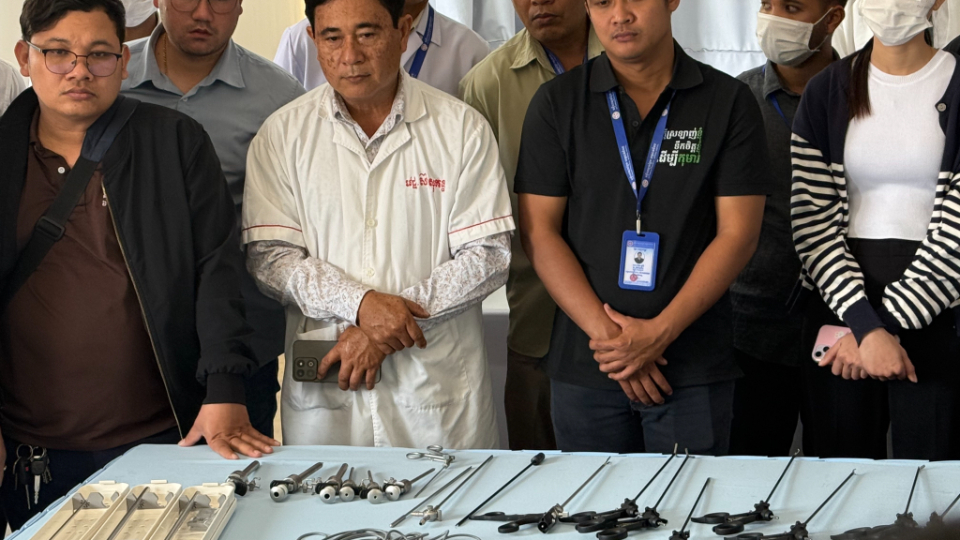
Medical-personnel-at-Battambang-Provincial-Hospital-view-instruments-used-in-laparoscopic-surgery.jpeg
Medical personnel at Battambang Provincial Hospital view instruments used in laparoscopic surgery.2025 by Intellectual Reserve, Inc. All rights reserved.A strong partnership is developing in Cambodian hospitals and the country’s health care system with The Association of The Church of Jesus Christ of Latter-day Saints and the Center for Global Surgery, which is associated with the University of Utah.
Cambodian surgical teams are being trained by surgical teams from the Center for Global Surgery and outfitted with instruments and equipment to perform the game-changing surgery. The partnerships and training projects will bless the lives of thousands of Cambodian surgical patients over the next many years.
Laparoscopic surgery is conducted through small incisions to gain access to body organs. Once mastered, laparoscopic surgery is dramatically safer, less invasive, less expensive, and results in brief recovery periods compared to open surgeries where doctors must cut open a patient’s body to work on organs. Even patients who have undergone major surgery can often go home within a few days.
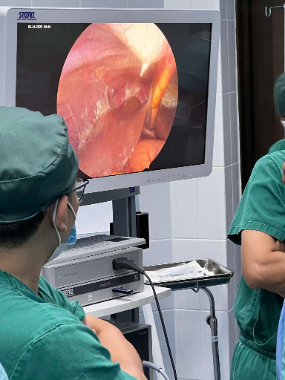
Doctors-in-training-watch-laparoscopic-surgery-on-a-monitor.jpeg
Doctors in training watch laparoscopic surgery on a monitor.2025 by Intellectual Reserve, Inc. All rights reserved.While laparoscopic surgery is common in the developed world, in Cambodia and many other developing countries, few doctors and hospitals are trained and equipped to provide the procedure.
The outlook is improving, however. The latest Cambodian laparoscopy training project was conducted in January 2025. A surgical team from the Center for Global Surgery trained two surgeons and associated medical personnel in the advanced surgical procedure at the Battambang Provincial Referral Hospital in northwest Cambodia. Additional surgeons and their teams from other Cambodian hospitals participated in parts of the training.
The Association of The Church of Jesus Christ of Latter-day Saints in Cambodia provided instruments and high-tech equipment for laparoscopic surgery and also paid the travel costs and living expenses of the training team.
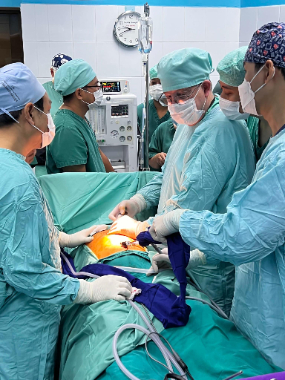
Cambodian-surgeons-learn-laparoscopic-surgery-from-U.S.-medical-team.jpeg
Cambodian surgeons learn laparoscopic surgery from U.S. medical team.2025 by Intellectual Reserve, Inc. All rights reserved.Dr. Raymond Price, an MD surgeon associated with Intermountain Medical Center (IMC) and the University of Utah, directs the Center for Global Surgery. With his teams, he has conducted more than 50 training projects, starting in 2005, in countries such as Mongolia (28 projects), Ethiopia, Ecuador, and Ghana. The Center for Global Surgery was formally established in 2011.
The training at Battambang Provincial Referral hospital is part of a series of laparoscopic training projects in Cambodia. Other training has been done at Calmette Hospital in Phnom Penh, the nation’s capital, and in Kampong Cham. Surgeons and their teams from earlier training sessions also participated in the Battambang training. Medical personnel from Mongkul Borey, expected to be the site of the next major training project, also were introduced to laparoscopic surgery. The goal is to “train the trainers” so that proficient Cambodian surgeons can train other doctors.
Besides Dr. Price, the Battambang team from the Center for Global Surgery included Dr. Nicholas Byrge, MD surgeon; Dr. Scott Hurst, MD anesthesiologist; Jamon Edwards, scrub tech; Phil Paget, biotech; and Leif Sorensen, research assistant/educator. All are from Utah and are associated with the University of Utah and/or Intermountain Healthcare.
Humanitarian missionaries from The Church of Jesus Christ of Latter-day Saints, worked with the hospital and the Center for Global Surgery. They helped arrange funding for needed equipment and for the travel and expenses of the U.S. surgical team.
Two surgeons, Assistant Professor Huot Socheat and Dr. Tol Kosal, received intensive training at the Battambang Provincial Referral Hospital, along with their surgical teams. During the training period, three or four gall bladder removal surgeries were performed each day, 27 in total. An emergency appendectomy was also performed on a nurse at the hospital who suffered acute appendicitis.
In all, 11 Cambodian doctors participated in or observed parts or all of the training, along with 18 scrub nurses and 12 anesthetists.
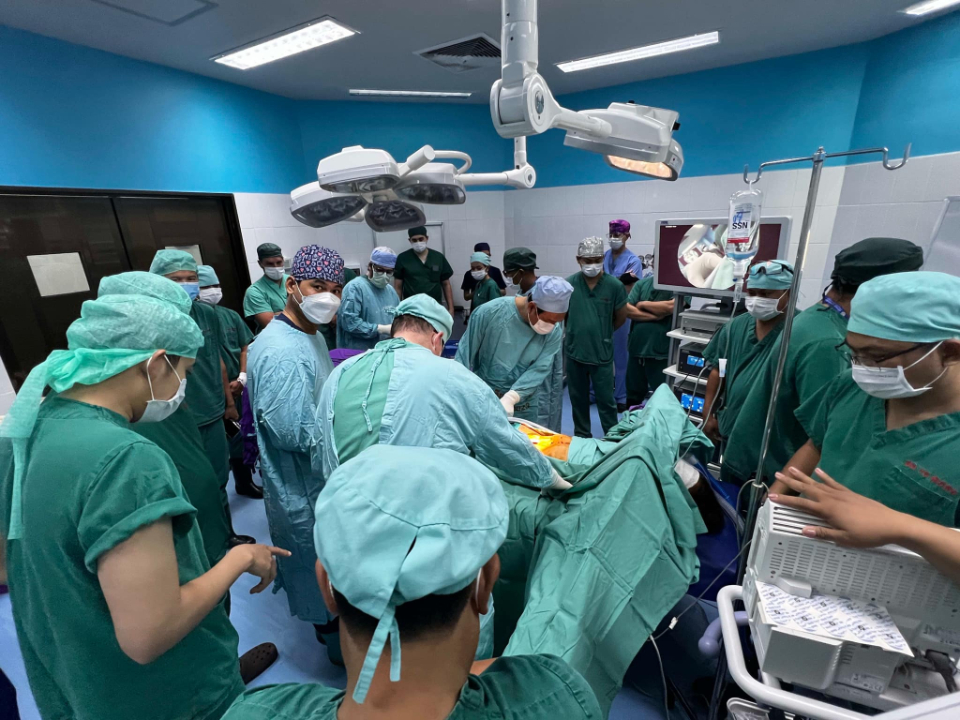
Surgeons-and-medical-personnel-gather-in-operating-room-to-observe-laparoscopic-surgery.jpeg
Surgeons and medical personnel gather in operating room to observe laparoscopic surgery.2025 by Intellectual Reserve, Inc. All rights reserved.The Cambodian teams initially practice using a simulator “training box,” becoming familiar with laparoscopic instruments and equipment and how they are used.
“The training includes not just surgery, but the entire process,” said Dr. Price. It includes pre-op and post-op procedures, keeping the instruments clean, documenting procedures, positioning the monitors, the kind of operating room facilities and beds needed, and even how a surgeon should stand to prevent injuries due to repetitive motions during surgery.
“Our main purpose is, of course, is to teach laparoscopic surgery,” said Dr. Price. “But our presence and our training process strengthen the entire health system. Doctors and hospital staff see improved ways to schedule and organize surgery, do nursing, keep instruments sterile, do pharmacy, anesthesiology, how to take care of equipment, and so forth. We help them gain confidence that they can perform modern surgery and improve patient outcomes.”
Team members being trained first observe actual laparoscopic surgeries, then assist with the surgeries, then perform laparoscopic surgeries with assistance, then perform surgeries with supervision, and finally perform laparoscopic surgeries independently. The surgical team from Utah uses multiple interpreters to communicate clearly with the Cambodian surgical teams.
Dr. Chan Davoeng, Deputy Director of Battambang Province for Health Care, and Dr. Hean Oudom, director of the Battambang Provincial Referral Hospital, both spoke at an opening ceremony before the training began. They thanked those involved in the training and celebrated the benefit laparoscopic surgery will be to patients in northwest Cambodia.
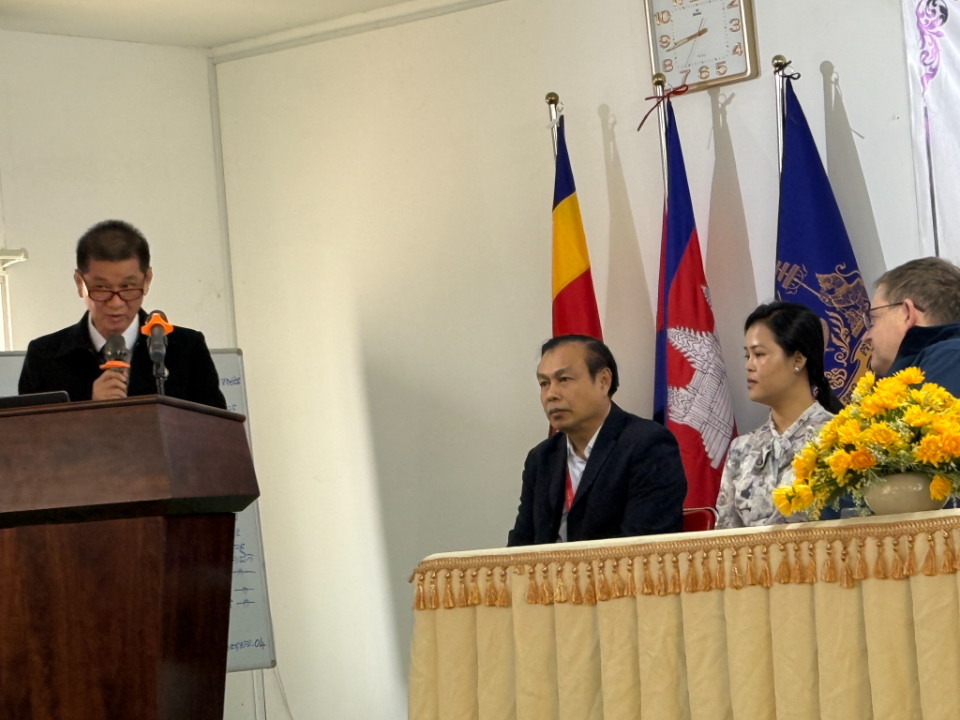
Dr.-Chan-Davoeng.jpeg
Dr. Chan Davoeng, deputy director for health care in Battambang Province, speaks in the opening ceremonies for laparoscopic training.2025 by Intellectual Reserve, Inc. All rights reserved.Yorn Sophaneth, humanitarian project manager for the Association of The Church of Jesus Christ of Latter-day Saints in Cambodia, said Church members believe health and education are important for a happy people and to a flourishing society. Contributing the cost of the equipment and expenses of the training team is made possible by donations made by members of The Church of Jesus Christ of Latter-day Saints from around the world, she said.
The opening ceremony was attended by more than 100 health care professionals from the Battambang area, including some medical students.
Dr. Price said several million surgeries are performed each year in developing countries in Southeast Asia. Millions of patients could undergo safer procedures, recover more quickly, be less likely to have complications, all done at less cost, with widespread availability of laparoscopic surgery.
Plans are being made by the Center for Global Surgery and The Association of The Church of Jesus Christ of Latter-day Saints to schedule laparoscopic training in other hospitals strategically located in Cambodia.